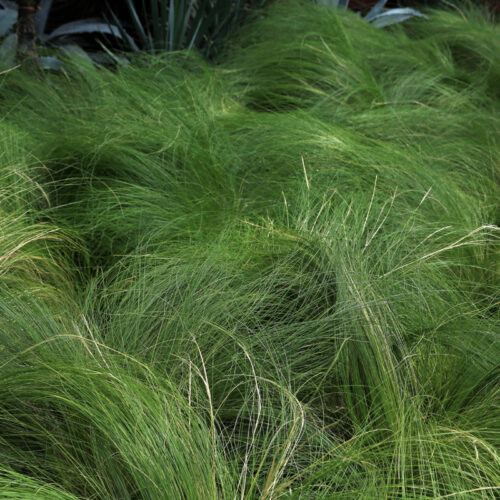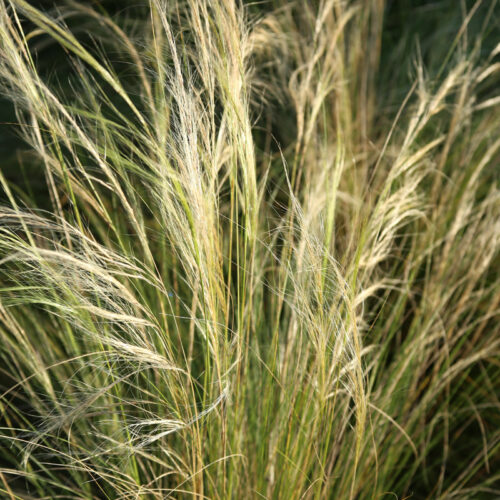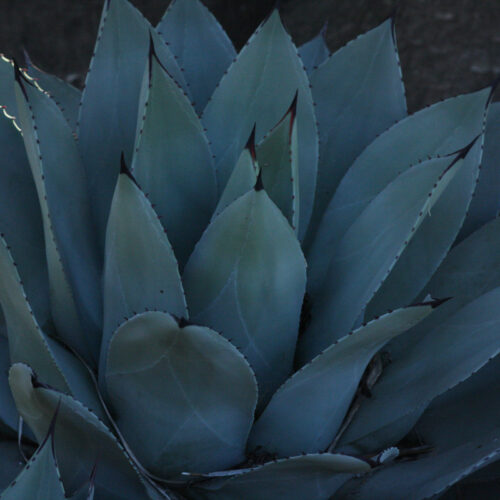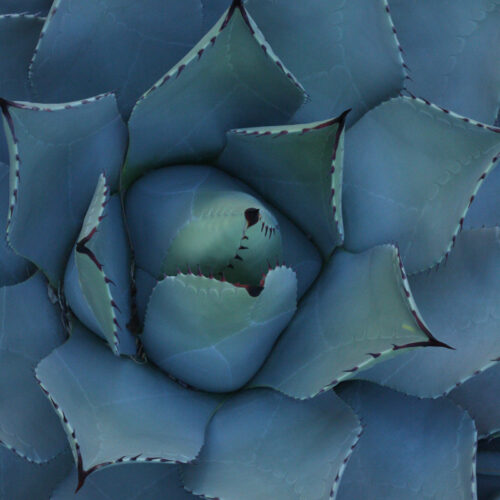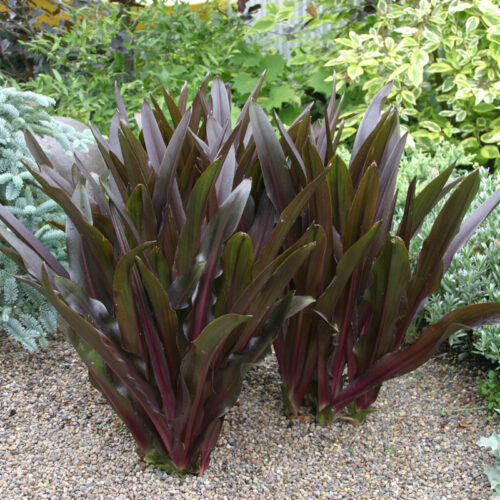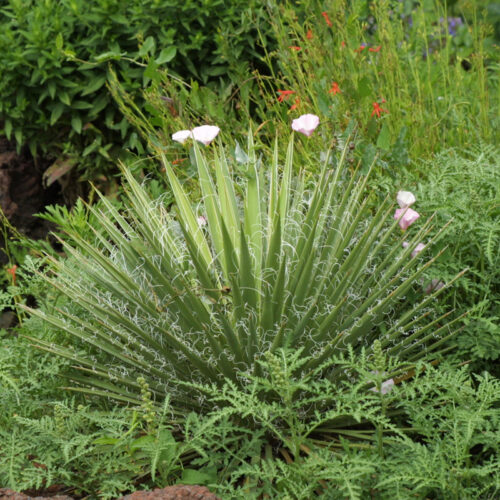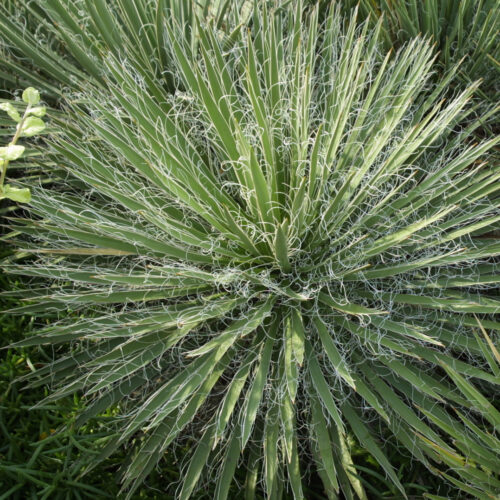When many gardeners hear the word “modern,” they often scrunch up their noses like they’ve suddenly caught a whiff of something foul. It’s true that many of us classify our landscapes as something other than contemporary. But even the most traditional of designs can benefit from an infusion of plants that one might describe as having a “modern look.” These plants serve as dynamic elements in a bed, easily becoming a focal point where perhaps one was missing. They can also seamlessly impart a space with a distinct sense of sophistication. With sleek architectural forms or moody foliage hues, these botanical elements give order to chaotic borders or simplicity to a color palette that has gotten out of control. Embracing these novel plants can help a staid design come alive. If you already have a modern home or landscape and are looking to fill in some blank spaces, the following selections are just what you need. But if you’re more of a traditionalist in search of some perennials that can breathe new life into tired beds and borders, the options below can also do the trick.
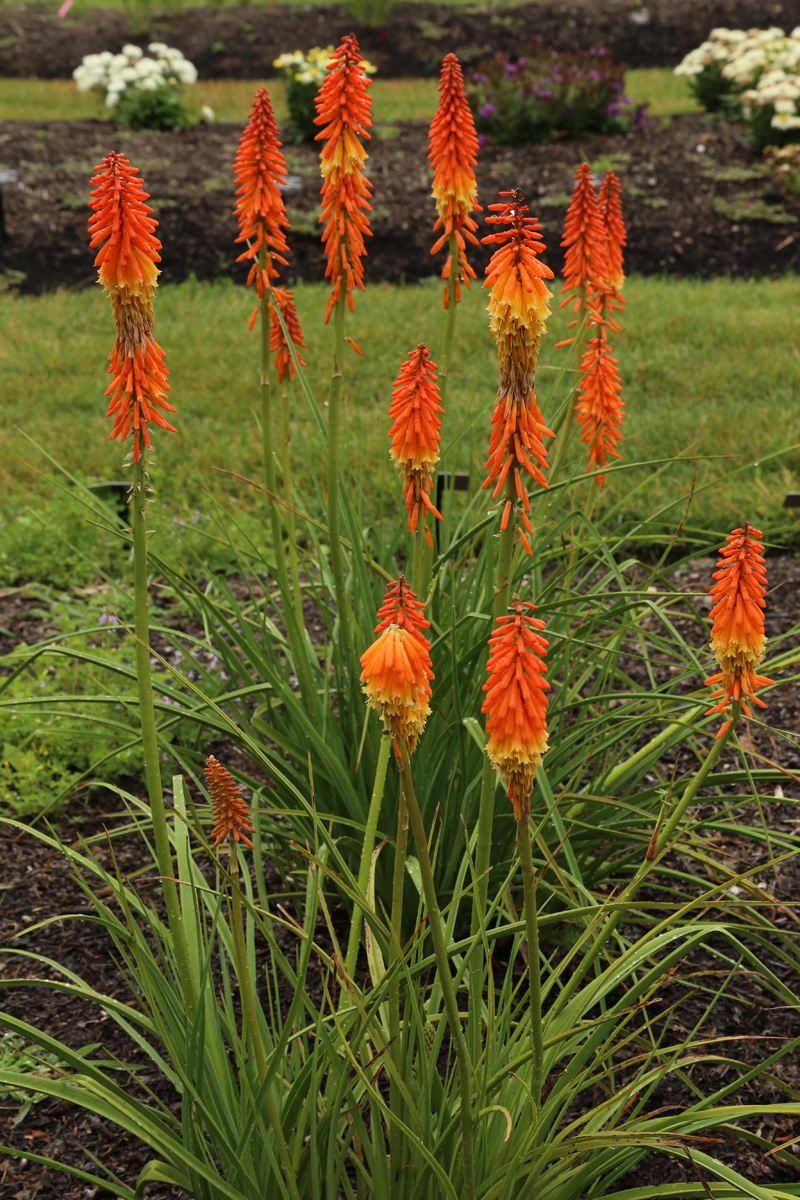
‘Incandesce’ red-hot poker
(Kniphofia ‘Incandesce’, Zones 6–9)
Size: 3½ feet tall and 2 feet wide
Conditions: Full sun; moist, well-drained soil
Native range: South Africa
Red-hot pokers in general look like they are straight out of outer space. Their rocket-like blooms are unlike almost anything else you’ll see in the plant world, and for that reason alone they make an excellent addition to any modern landscape. But their overall habit also make them well-suited to an orderly, minimalist bed. Long, thin, grasslike blades are held firmly upright throughout the entire season and give each individual plant a stately look. Then in early to midsummer, sturdy stems shoot from the base of the foliage and explode into bottle-brush blooms. The colors usually range from red to orange to bright yellow, although there are a few white cultivars that may appeal to gardeners with subtler tastes. ‘Incandesce’ sports a more classic Kniphofia look with buttery yellow at the base of each bloom and a transition into peach-melba and finally bright orange at the tip. Although red-hot pokers are anything but subdued, they’re a perfect choice for the adventurous green thumb.
Mexican feather grass
(Nassella tenuissima, Zones 7–10)
Size: 1 to 2 feet tall and wide
Conditions: Full sun to partial shade; well-drained soil
Native range: Texas, New Mexico, Mexico, Argentina
When thinking about modern-looking plants, we mostly dream of well-structured choices with stiff silhouettes and clean lines. Mexican feather grass has none of these traits, but it is the perfect counterbalance to more architectural neighbors. This is a finely textured perennial that is native to much of the dry, rocky slopes of southwestern North America. The hairlike blades form a bushy clump over time, add undeniable movement to the edges of paths, and look especially great when planted in mass (photo left). In summer, blonde panicles top the bright green clumps and make each plant look like it went to the salon for highlights (photo right). This perennial may go dormant during periods of summer drought and resents winter wet, so make sure it is placed in a spot with excellent drainage. Reseeding does occur, so stay vigilant.
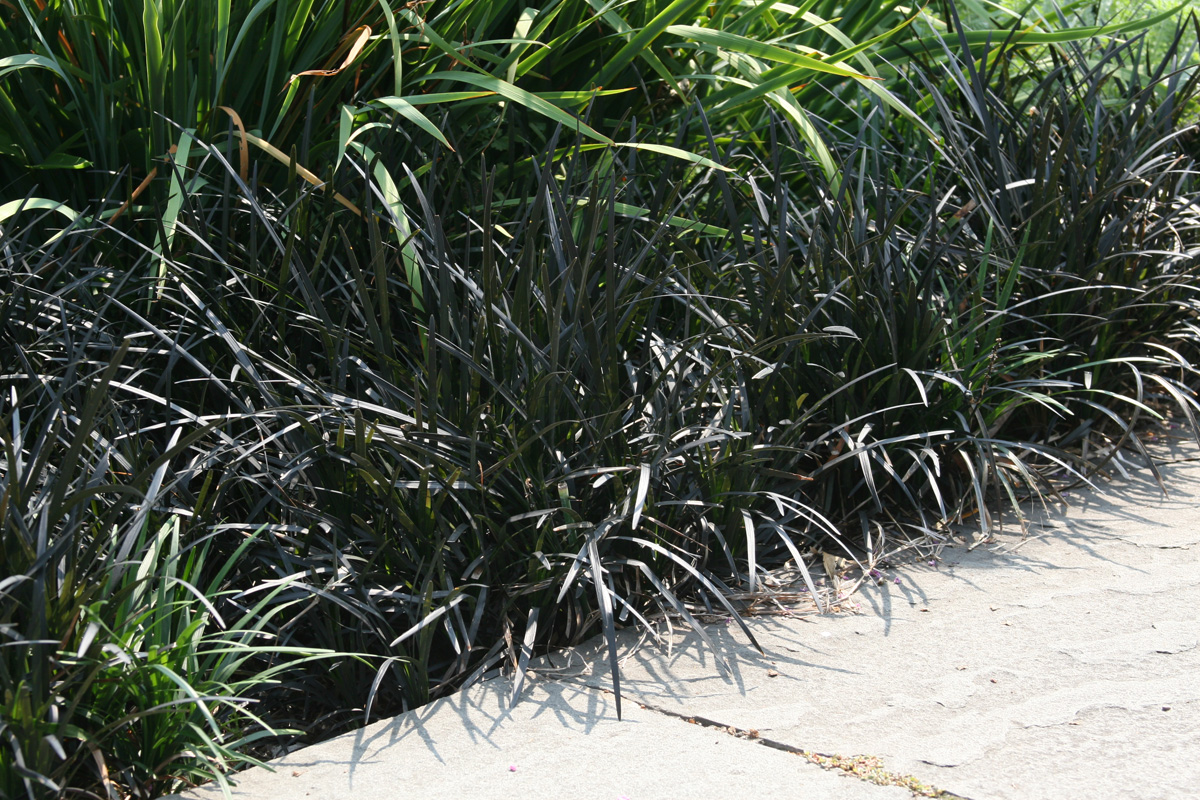
Black mondo grass
(Ophiopogon planiscapus ‘Nigrescens’, Zones 5b–9)
Size: 8 to 12 inches tall and wide
Conditions: Partial shade; moist, well-drained soil
Native range: Japan
Nothing feeds a minimalist look like black, and in the plant world there is no more iconic moody-hued specimen than black mondo grass. This short, clumping perennial practically screams “contemporary aesthetic.” If you’re looking to highlight the linear edge of a patio or walkway, a trim line of this ground cover will do the trick. Each individual plant will expand over time to around 8 to 12 inches but will slowly spread to form a well-behaved mat if given some extra space. In midsummer, small pale violet flowers appear on short stems but aren’t much of a focal point. Instead, it’s the midnight-colored, rubber-like blades that make the most poignant impression. If you have black outdoor accessories or the exterior of your home has black trim and/or framing, this is a plant that your beds and borders must have!
Parry’s agave
(Agave paryii, Zones 7–10)
Size: 1½ to 2 feet tall and 2 to 3 feet wide
Conditions: Full sun; well-drained soil
Native range: Southwestern United States, northern Mexico
Let’s face facts: Any agave is a good candidate for a modern garden. Agaves are arguably the most architectural plants in all of horticulture. The genus offers up an array of various sizes and colors, and there are some species that will even be hardy into Zone 5. Although some agaves get several feet tall, it’s easier to incorporate a smaller selection like Parry’s agave into a mixed border or foundation planting (photo left). This is a perennial that forms a tight symmetrical rosette of blue-green leaves, topped with black spines (photo right). Each leaf can reach over a foot long in time. This plant is an instant focal point and will draw visitors in off the street if given the chance. It’s not uncommon for pups (suckering off-sets) to form at the base of the rosette. These can be removed and transplanted elsewhere or left in place to form an agave colony. Like most desert natives, Parry’s agave hates too much moisture; if exposed to any sort of standing water (over the winter or otherwise), it will die.
‘Sparkling Burgundy’ pineapple lily
(Eucomis comosa ‘Sparkling Burgundy’, Zones 6-9)
Size: 1 to 2 feet tall and wide
Conditions: Full sun; moist, well-drained soil
Native range: South Africa
Most contemporary gardens don’t have a lot of frothy flowers. Plants that fit into the overall look of a minimalist landscape have subtle blooms, or ones that are architectural. Both can be said about the flowers of pineapple lily. One of the best cultivars out there is ‘Sparkling Burgundy’, which features a clump of strap-like linear, wavy-edged, dark purple leaves that spread stiffly upward and outward (photo left). From each rosette, a thick, purple-spotted flower stalk rises to about 2 feet tall in mid to late summer before giving way to a dense, cylindrical raceme. Each wand is filled with tiny starlike flowers and is topped by a green tuft that resembles a pineapple (photo right). The blossoms last for up to 8 weeks. This is a plant whose habit and blossoms both could be described as modern.
Narrow-leaf yucca
(Yucca harrimaniae, Zones 5–9)
Size: 1 to 1½ feet tall and wide
Conditions: Full sun; dry soil
Native range: Southwestern United States
If you like the spiky, symmetrical look of agaves but live in a cooler location, then a yucca is just what the doctor ordered. The genus features every imaginable size and foliage type, but narrow-leaf yucca has both a sharp silhouette and exceptional texture. Plants form a tight rosette and can grow singularly; if left unchecked, they form clusters over time (photo left). Each selection develops a short trunk, which can be exposed for a palm-tree look if that suits your fancy. The foliage consists of straight, narrow, green blades with brown edges that are adorned with curly white filaments (photo right). Does narrow-leaf yucca look like a hairy agave? Yes. Is it fabulous all the same? Yes. Two-foot-tall stems form in summer and become covered in white bell flowers. They are pollinated by white yucca moths. In the evening, the flowers attract the female moths that feed on the nectar, then collect the pollen into a ball. The moths will then transfer that ball to the next flower, which ensures fertilization and seed formation. Planting a narrow-leaf yucca ensures you’ll have a modern feel to your garden, and you’ll be entertained by the wonders of nature. What more could you want?
Read more:
For more on modern gardens, go here.
Check out this modern planting plan.
Danielle Sherry is the executive editor.



